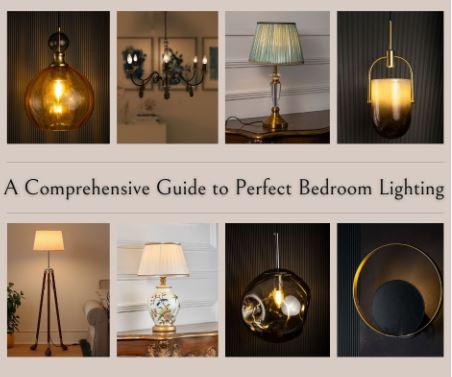If your bedroom is like most, it is more than a place to sleep. It’s your castle, your private sanctuary where comfort meets style. Apart from the furniture and decor, lighting is a critical element to make your bedroom feel the way you want it, and lighting fixtures such as pendant lights, table lamps, and floor lamps can complement each other to create the right mood and optimize functionality. This guide will detail the step-by-step planning process of creating the perfect bedroom lighting setup.
Step 1: Assessing Your Bedroom's Needs
Before you make lighting selections, take some time to think about your bedroom space and activities. Consider the dimensions of the room, furniture layout, other activities that need focused lighting, etc. This will help you decide on what fixtures and placements should be used.
Step 2: Defining Lighting Zones
Use zoning to help you design lighting for different activities and atmospheres in your bedroom. You’ll need ambient light for general illumination, task lighting for specific activities such as reading and dressing, and accent lighting to enhance certain décor details. By plotting out zones, you’ll ensure a balanced lighting scheme.
Step 3: Using Pendant Lights to Set the Ambience
Pendant lights are ideal for creating a vibe in your bedroom because they are both ornamental and useful. Install a pendant light as the main focal point of your décor, choosing one that goes well with it. Pendant lights are great for ambient lighting since their gentle, diffused radiance gives off a warm atmosphere.
Step 4: Using Table Lamps to Add Task Lighting
When it comes to providing focused illumination for tasks like reading or working in bed, table lamps are invaluable. To modify the light intensity to your preference, choose table lamps with movable components like dimmer switches or swivel heads. Arrange them so that they are easily accessible for tasks by placing them on dressers or bedside tables.
Step 5: Improving the Ambience with Floor Lamps
Floor lamps are a great way to add flair and adaptability to your bedroom lighting setup. Floor lights are an excellent choice for both targeted illumination and additional ambient lighting in particular places. Choose modern styles that blend well with the décor of your bedroom, then arrange them so they may cast light on gloomy areas or serve as comfortable reading nooks.
Step 6: Examining Other Lighting Choices
For a more unique and nuanced look, think beyond standard fixtures when adding lighting to your bedroom. Wall sconces are compact fixtures that can highlight architectural details or give focused lighting. Whereas LED strips enable artistic accent lighting along shelves or headboards, recessed lighting provides a soft, ambient glow without taking up precious real estate.
Step 7: Aligning Layers of Lighting Creating
A calming and welcoming ambiance in your bedroom requires layering several kinds of lighting. To add visual interest and depth, smoothly combine task, ambient, chandelier, and accent lighting. To easily customize each layer to your mood and taste, use dimmer switches or smart lighting controls to adjust each layer's color temperature and intensity.
Conclusion
Designing lamps and lighting plans that work well for your bedroom requires balancing practicality and beauty. You may create a sanctuary that expresses your taste and promotes relaxation by using these step-by-step instructions and experimenting with different fixtures. Thus, give your bedroom a cozy and enticing illumination and enjoy the transformative power of lighting.

